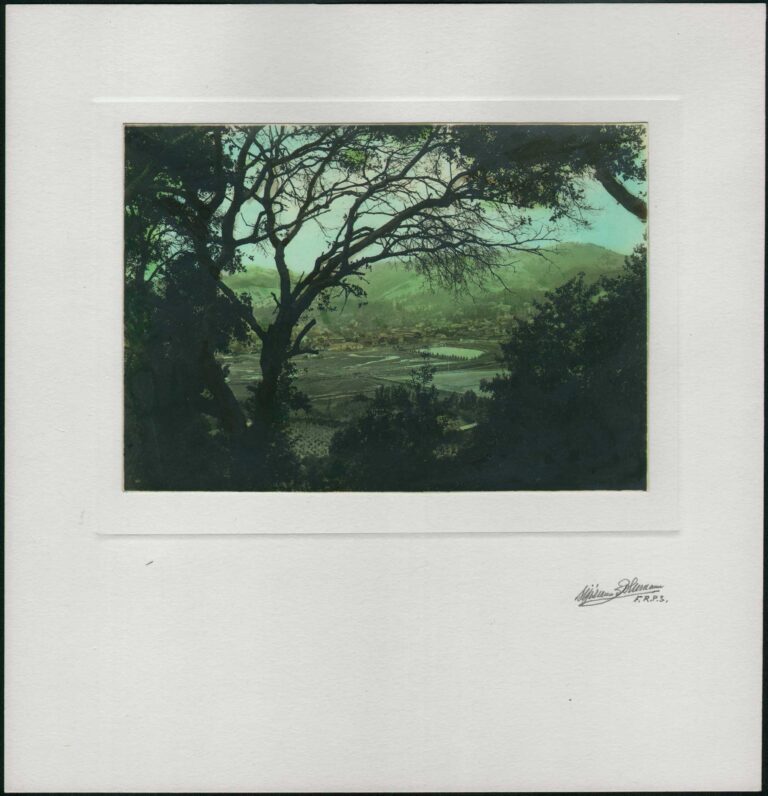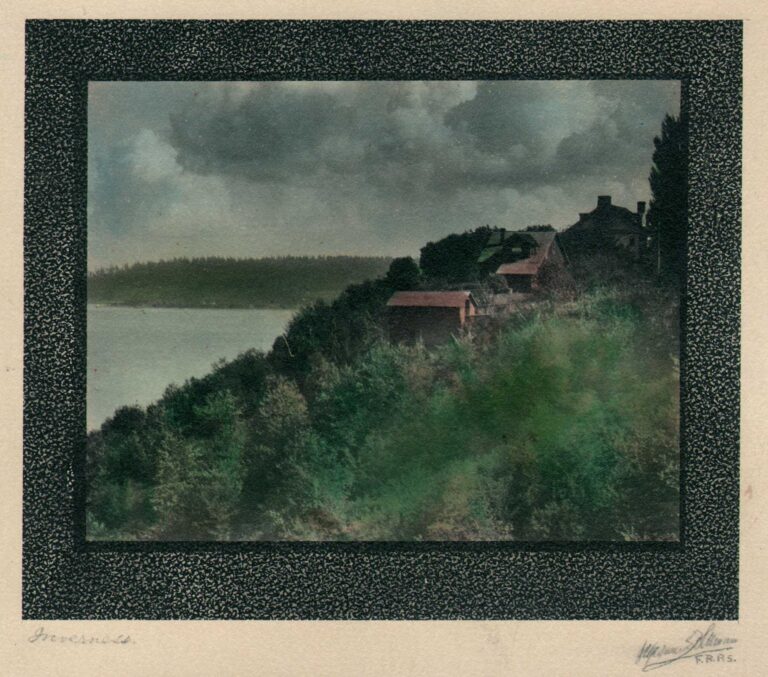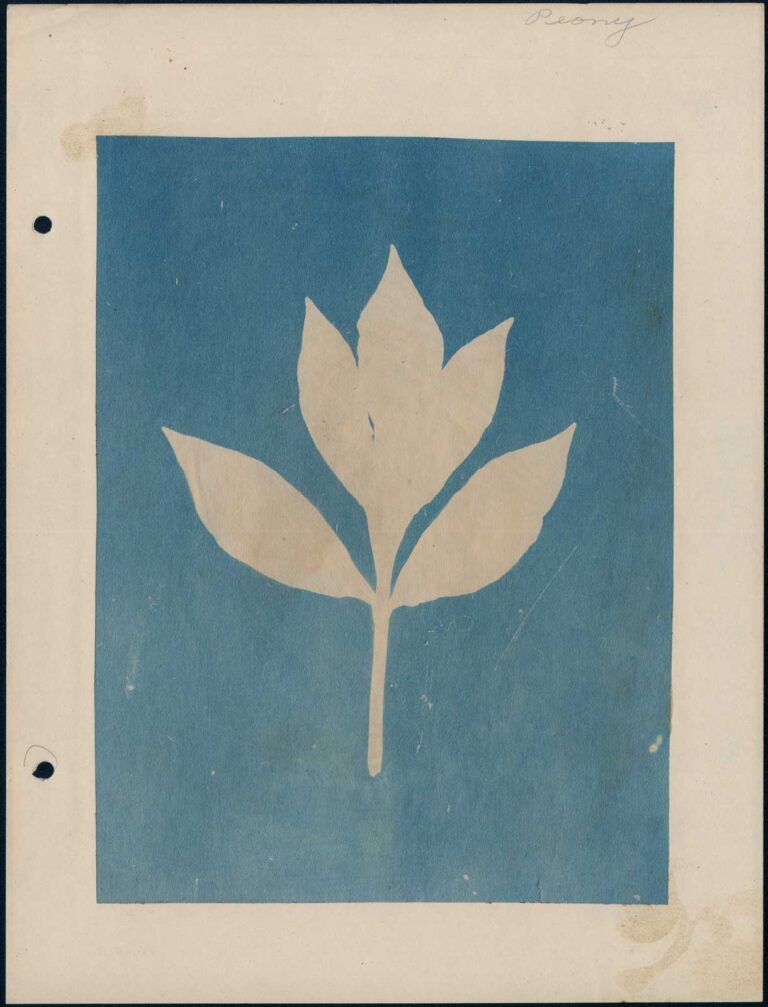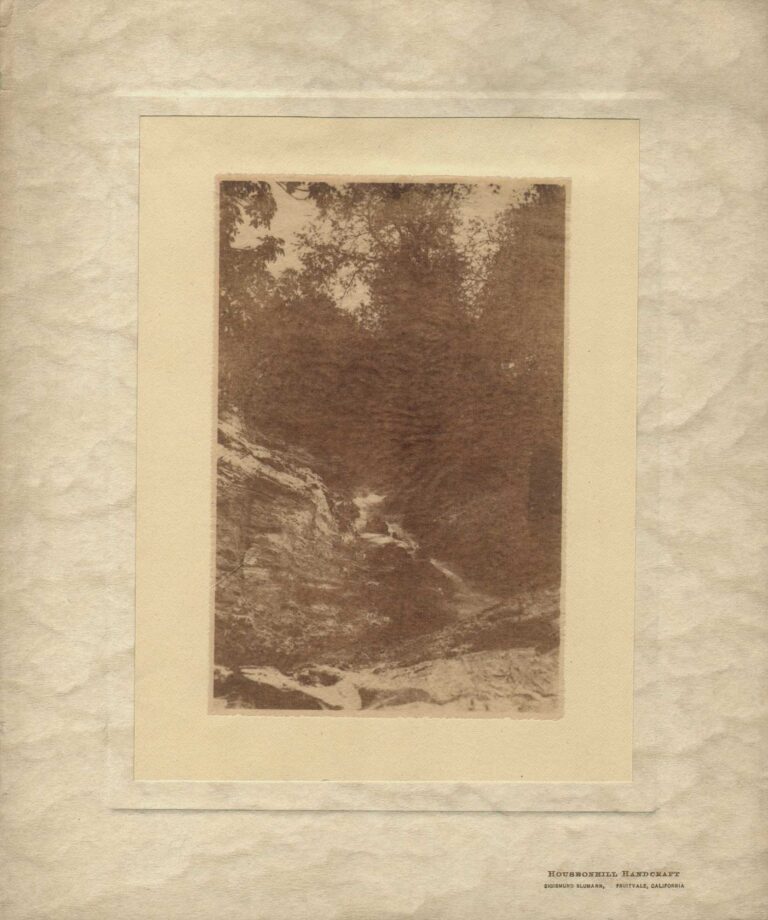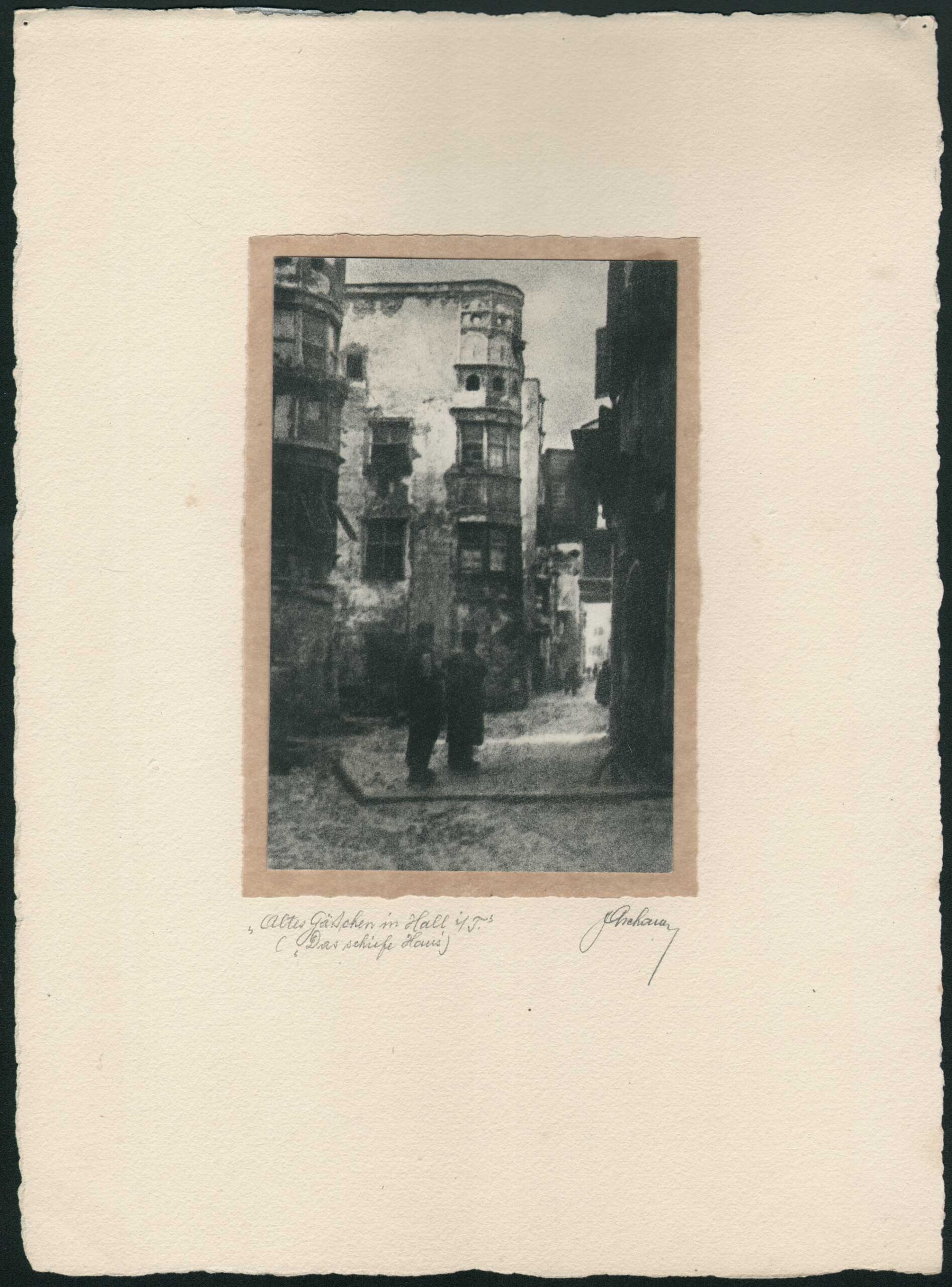
An Old Street in Hall | Tyrol
People stand in the middle of the street in the old town section of Hall, in Tyrol, Austria. Eminent Viennese pictorialist photographer Julius Aschauer, (b. 1878?) who perfected the bromoil process to a high level, was made a fellow of the Royal Photographic Society in 1927, and was active as an amateur in the 1920s and 1930s.
Mr. Aschauer sent about twenty of the finest Bromoil Transfers over the period of the year and achieved three of the medals. That he did not win oftener is an evidence that judges can and do find the value that may lie in even a snap-shot when it carries a message of art and beauty. And it proves that juries are not always swayed by the wonders of technic or the fame that lies in a name. — “THIS IS THE CUP WINNER”: Camera Craft: April, 1926, p. 177: illustrated: THE BEGGAR- Medalist and First Award Camera Craft May Competition
Hall in Tirol is a town in the Innsbruck-Land district of Tyrol, Austria. Located at an altitude of 574 m, about 5 km (3 mi) east of the state’s capital Innsbruck in the Inn valley, it has a population of about 13,000 (Jan 2013).
Since the 13th century, the salt mine at Absam in the Hall Valley north of the town formed the main industry of the town and its surroundings. The first adit was laid out in 1272 at the behest of Count Meinhard II of Tyrol, with the brine channeled by a 10 km (6 mi) long pipeline to the evaporation pond at Hall. The importance of the salt industry, which exported goods as far as Switzerland, the Black Forest, and the Rhine valley, is reflected in Hall’s coat of arms, which shows two lions holding a cask of salt. In 1303, Hall became a town. The rights that came with this, as well as the business associated with trading from Hall downriver on Inn and Danube, turned it into the leading market and trading place in the northern parts of Tyrol. Its development suffered a serious setback in 1447, when large parts of the upper town area were razed by a fire. In 1477, it got the right of coinage, when the Tyrolian mint was moved from Meran to Hall. In 1486, the mint produced the first large silver coin Guldengroschen in Europe. In the 16th century, the mint in Hall also introduced the world’s first automated coining machine. Today a reconstruction of this revolutionary machine can be seen in the Hall Mint Museum in the Burg Hasegg.
In the 15th and 16th centuries, Hall was one of the most important towns in the Habsburg Empire. This period saw the construction of many of the churches, monasteries and convents that still shape the appearance of the town. Today Hall has the biggest intact old town in the western part of Austria.
During the Habsburg monarchy, a military garrison was established in Hall. This, along with the large freight train station, became a target of heavy bombardment during World War II, which destroyed the train station but left the old town almost unscathed. — Wikipedia accessed 2024
